10 Key Trends Shaping Education Software Development Today
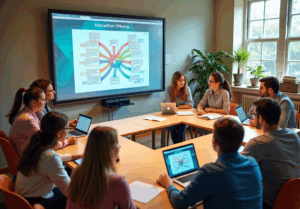
10 Key Trends Shaping Education Software Development Today
Overview
The article titled "10 Key Trends Shaping Education Software Development Today" examines significant trends currently influencing the development of educational software. It emphasizes key features such as the integration of artificial intelligence, mobile learning, and gamification. These innovations provide advantages by enhancing personalized learning experiences and improving engagement. Ultimately, they benefit educators and learners alike by streamlining educational processes and transforming how instruction is delivered and experienced.
How do these trends impact your approach to educational software? The incorporation of augmented and virtual reality, for instance, offers immersive experiences that can captivate learners, making education more interactive. Additionally, the rise of mobile learning allows for flexibility, enabling students to access content anytime and anywhere.
In conclusion, understanding these trends not only informs software development but also empowers educators to adopt new strategies that enhance learning outcomes. By staying abreast of these innovations, stakeholders can better meet the evolving needs of students and educators in an increasingly digital landscape.
Introduction
The landscape of education software development is rapidly evolving, influenced by technological advancements and an increasing demand for personalized learning experiences. As educators and developers navigate this dynamic environment, they encounter a range of innovative trends that have the potential to reshape how knowledge is delivered and absorbed.
What challenges and opportunities do these emerging technologies present for the future of education? From AI integration to immersive learning environments, exploring these key trends reveals not only the potential for enhanced engagement and improved outcomes but also the critical considerations that must be addressed to fully harness their power.
Initial Data Offering: Streamlining Dataset Discovery for Educational Software
Initial Data Offering (IDO) serves as a crucial platform that connects educators and developers with high-quality datasets essential for education software development and creating effective learning tools. By leveraging SavvyIQ's AI-driven APIs and the Recursive Data Engine, IDO compiles unique datasets enriched by AI-generated insights. This significantly enhances the ability of instructional tools to provide tailored experiences that meet the diverse needs of learners.
The streamlined access to data fosters innovation in education software development, enabling developers to create solutions that are both data-driven and relevant to current educational trends. Research indicates that customized educational environments, facilitated by education software development, can lead to a 30% increase in student scores, underscoring the importance of utilizing quality datasets in application development. Furthermore, with the global education technology market projected to reach USD 11,610 million by 2025 and the overall EdTech market anticipated to be valued at around USD 549.6 billion by 2033, the demand for accessible and relevant data grows increasingly critical.
IDO's commitment to cultivating a collaborative environment ensures that educators can effectively utilize these datasets, ultimately enhancing outcomes and engagement across various academic settings. How might these datasets transform your approach to educational development? By harnessing the power of IDO, educators and developers can significantly impact the learning landscape, driving forward the future of education software development.
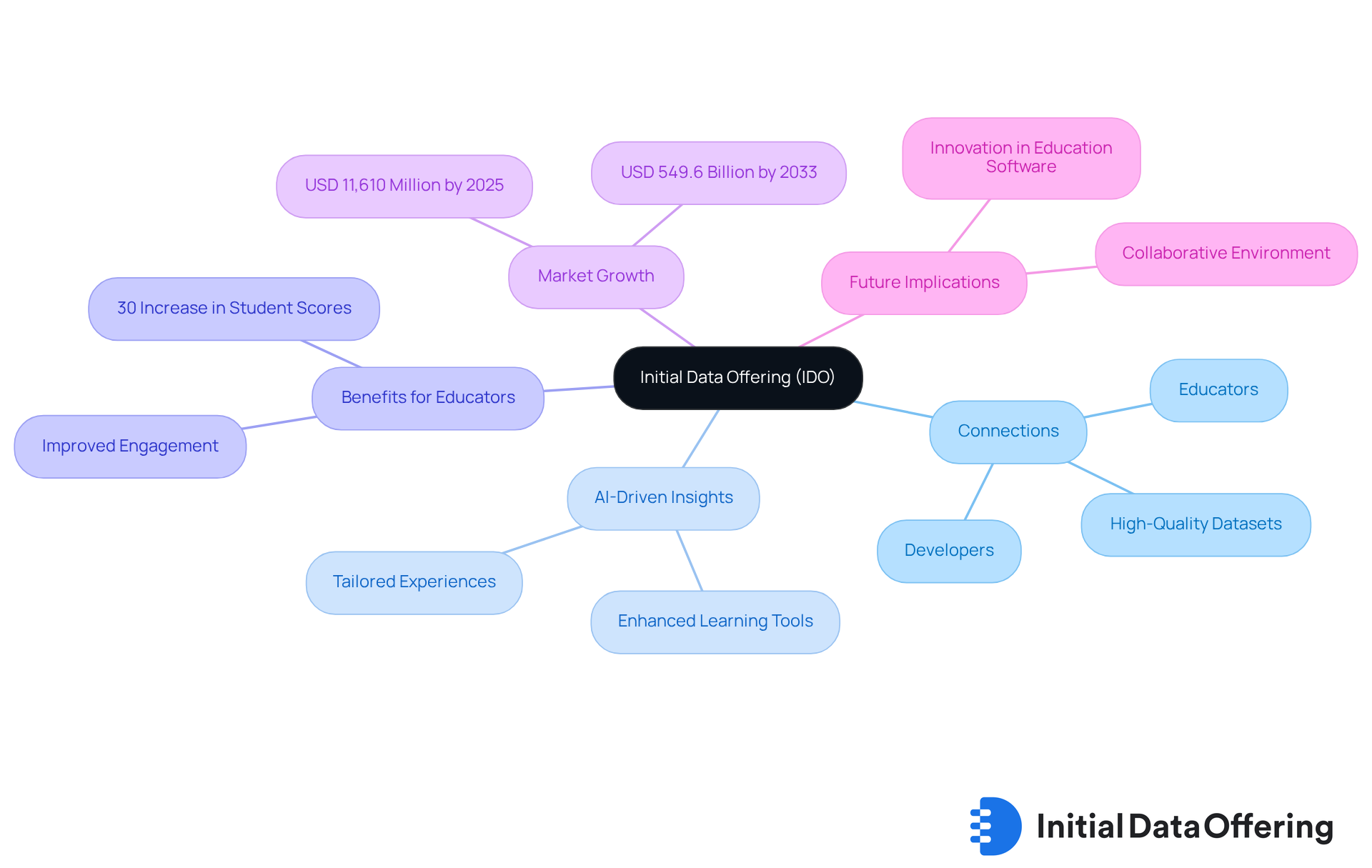
AI/ML Integration: Enhancing Personalization in Education Software
The incorporation of artificial intelligence (AI) and machine learning (ML) in education software development is fundamentally transforming customized instruction. By utilizing learner data, these technologies tailor educational material to match personal styles and speeds. What does this mean for educators? Adaptive educational platforms, such as DreamBox and Smart Sparrow, utilize AI algorithms to assess learner performance in real-time, dynamically modifying task difficulty to enhance educational outcomes. This customized method not only enhances learner engagement but also fosters a more inclusive educational atmosphere.
Current trends indicate that nearly 50% of educational institutions are actively engaging in education software development or deploying interpretive AI for data-driven insights. This reflects a significant shift towards data-informed decision-making in education. Furthermore, 64% of institutions are utilizing predictive AI to forecast learner performance. This enables educators to identify at-risk individuals and tailor interventions effectively. Such advancements highlight the increasing focus on education software development for personalized education, which is crucial for nurturing a motivated and self-assured group of learners.
Educators recognize that AI-driven assessments and predictive analytics enable them to track learner progress effectively. This provides immediate feedback that empowers individuals to adjust their strategies. As Andrew Katz notes, 'Early exposure to AI in K-12 can demystify complex engineering concepts,' underscoring the importance of integrating these technologies thoughtfully. However, as AI continues to reshape teaching methods, it is crucial for institutions to prioritize the ethical implications and practical applications of these technologies. This ensures that all individuals benefit from a more adaptive and engaging experience.

AR/VR Integration: Creating Immersive Learning Environments
Augmented reality (AR) and virtual reality (VR) are increasingly being integrated into education software development, creating immersive learning experiences that captivate students. These technologies allow learners to interact dynamically with content, which facilitates a deeper understanding through interactive simulations and virtual environments. For example, VR can transport students to historical sites or scientific laboratories, providing experiential learning opportunities that traditional methods cannot match. This immersive approach not only captures students' attention but also significantly enhances knowledge retention, making learning more effective and engaging.
What implications do these technologies have for the future of education? As educators and institutions engage in education software development, adopting AR and VR can help them create more engaging curricula that resonate with students. By immersing learners in realistic scenarios, they can better grasp complex concepts and apply their knowledge in practical situations. Ultimately, the integration of AR and VR in education represents a transformative shift toward more interactive and impactful learning experiences.
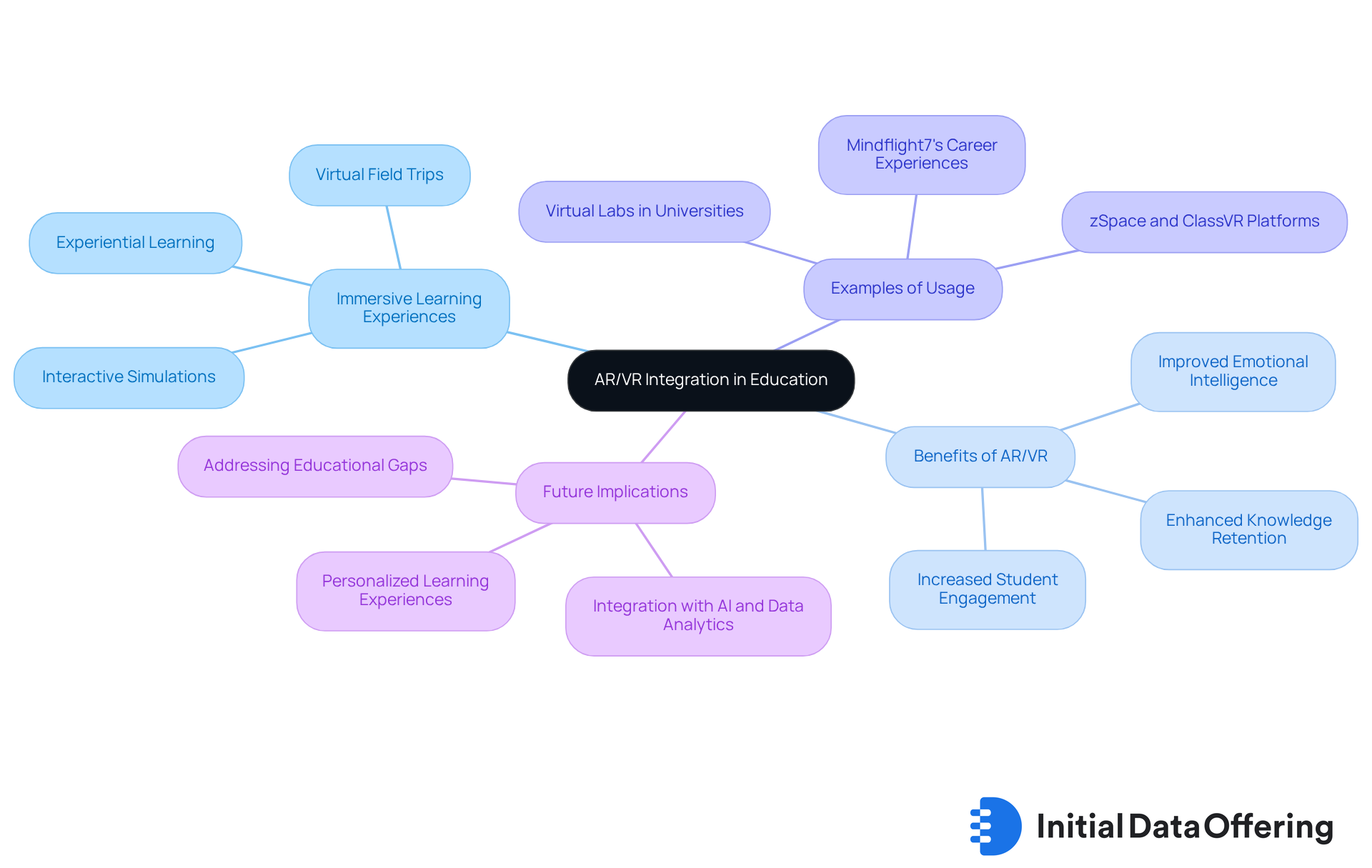
Blockchain Technology: Securing Educational Credentials
Blockchain technology is transforming the way academic credentials are secured, providing a decentralized and tamper-proof solution for verifying qualifications. By utilizing blockchain, institutions can issue digital diplomas and certificates that are easily verifiable by employers, thereby boosting the credibility of academic achievements. This innovation significantly streamlines the credential verification process, mitigating the risk of fraud and ensuring that qualifications are authentic. As learning organizations increasingly acknowledge the significance of secure digital credentials, the adoption of blockchain is becoming a pivotal trend in the sector.
For instance, initiatives like the pilot program at Arizona State University and Maricopa County Community College District demonstrate how blockchain can facilitate smoother transitions for transfer students by securely managing their academic records. This ultimately aims to improve degree attainment. Furthermore, the growing demand for reliable verification methods underscores the necessity of blockchain in education, as it addresses long-standing issues with traditional record-keeping practices.
Additionally, with $900,000 allocated for the Blockchain Innovation Challenge, there is a clear financial commitment to advancing blockchain projects in education. This funding demonstrates institutional backing for innovative solutions that improve learning outcomes.
Quotes from industry leaders further emphasize the significance of blockchain in education. DC Kumawat states, "Blockchains are great because they can create unique digital objects that prove your degrees and certificates are legitimate." Meanwhile, Ted Mitchell emphasizes that blockchain has the potential to establish more efficient, durable connections between learning and work, reinforcing the significance of this technology in linking academic results with job opportunities.
However, it is essential to acknowledge the challenges associated with blockchain adoption in education, such as data privacy and system integration concerns. Tackling these challenges will be vital for the successful implementation of blockchain technology in learning environments.
Key Benefits of Blockchain in Education:
- Provides a secure and immutable platform for storing educational credentials.
- Reduces the risk of fraud in credential verification.
- Enhances the credibility of academic achievements.
- Streamlines administrative processes related to credentialing.
- Facilitates smoother transitions for learners between institutions.
With the potential to automate administrative tasks and offer a clear framework for credentialing, blockchain is set to play a vital role in shaping the future of verification.
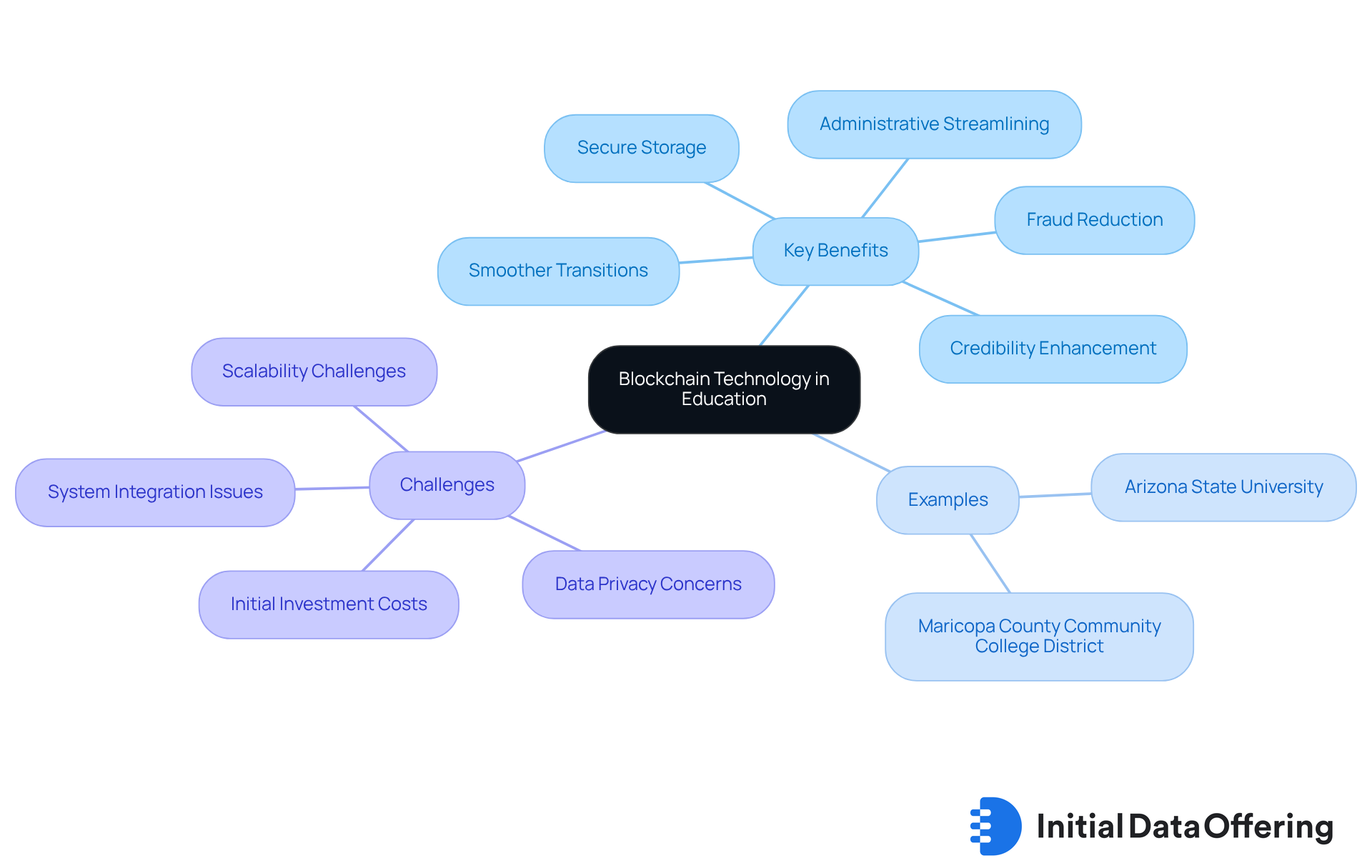
Mobile Learning: Facilitating Anytime, Anywhere Education
Mobile education is transforming instruction by providing individuals the capability to access educational resources at any time and place. The rise of smartphones and tablets has fueled education software development, resulting in a surge of learning software designed to be mobile-friendly, enabling learners to engage with content on the go. This flexibility not only meets the demands of busy students but also expands educational opportunities by providing access to resources beyond traditional classroom settings. For example, learning apps such as myAko provide more than 2000 interactive bite-sized training courses, enabling users to study at their own speed and revisit difficult concepts whenever necessary. This corresponds with the discovery that 89% of employees show a wish to acquire knowledge from anywhere, highlighting the significance of mobile education in improving accessibility and engagement.
The importance of mobile-friendly educational tools cannot be overstated. They accommodate various educational styles and preferences, utilizing adaptive technology to tailor lessons based on individual abilities. A Deloitte survey reveals that:
- 72% of students believe mobile education improves their performance and productivity.
- 89% show a wish to study from any location.
This transition towards mobile education is further backed by the anticipated expansion of the global mobile education market at a CAGR of 21.5% from 2021 to 2028, fueled by heightened mobile device usage and demand for adaptable education.
Moreover, education software development that is mobile-friendly significantly influences learner engagement. Interactive elements like quizzes, simulations, and gamification turn standard education into a pleasurable experience, enhancing retention and motivation. Educational apps facilitate group work and communication among students, fostering a sense of community and collaboration. As instructors increasingly acknowledge the advantages of mobile education software development, they emphasize its significance in creating dynamic and engaging educational environments. The integration of Augmented Reality (AR) and Virtual Reality (VR) technologies into learning applications further enhances understanding and engagement, providing immersive experiences that captivate learners. For instance, the application of AR in instructional apps can create interactive scenarios that enhance understanding and retention.
In summary, education software development for mobile learning tools is essential for contemporary education, as it provides flexibility, accessibility, and tailored learning experiences that enable learners to take control of their education. As the terrain of learning applications continues to progress, prioritizing mobile-friendly solutions will be vital for enhancing learner engagement and achievement.

Gamification: Boosting Engagement Through Game Elements
Gamification is increasingly utilized in education software development to enhance learner engagement and motivation. By incorporating features such as points, badges, and leaderboards, education software development creates a more interactive and enjoyable educational experience. This method not only makes education enjoyable but also encourages education software development by motivating learners to take responsibility for their advancement.
The advantages of gamification are significant. Platforms that incentivize individuals for completing tasks or reaching milestones can greatly boost their dedication to education software development. This results in better outcomes, as learners are more likely to engage deeply with the material. How might these features transform your approach to learning and teaching?
In conclusion, gamification represents a powerful strategy in the field of education software development. By making learning more engaging and rewarding, it fosters a sense of ownership among learners, ultimately leading to enhanced educational experiences.
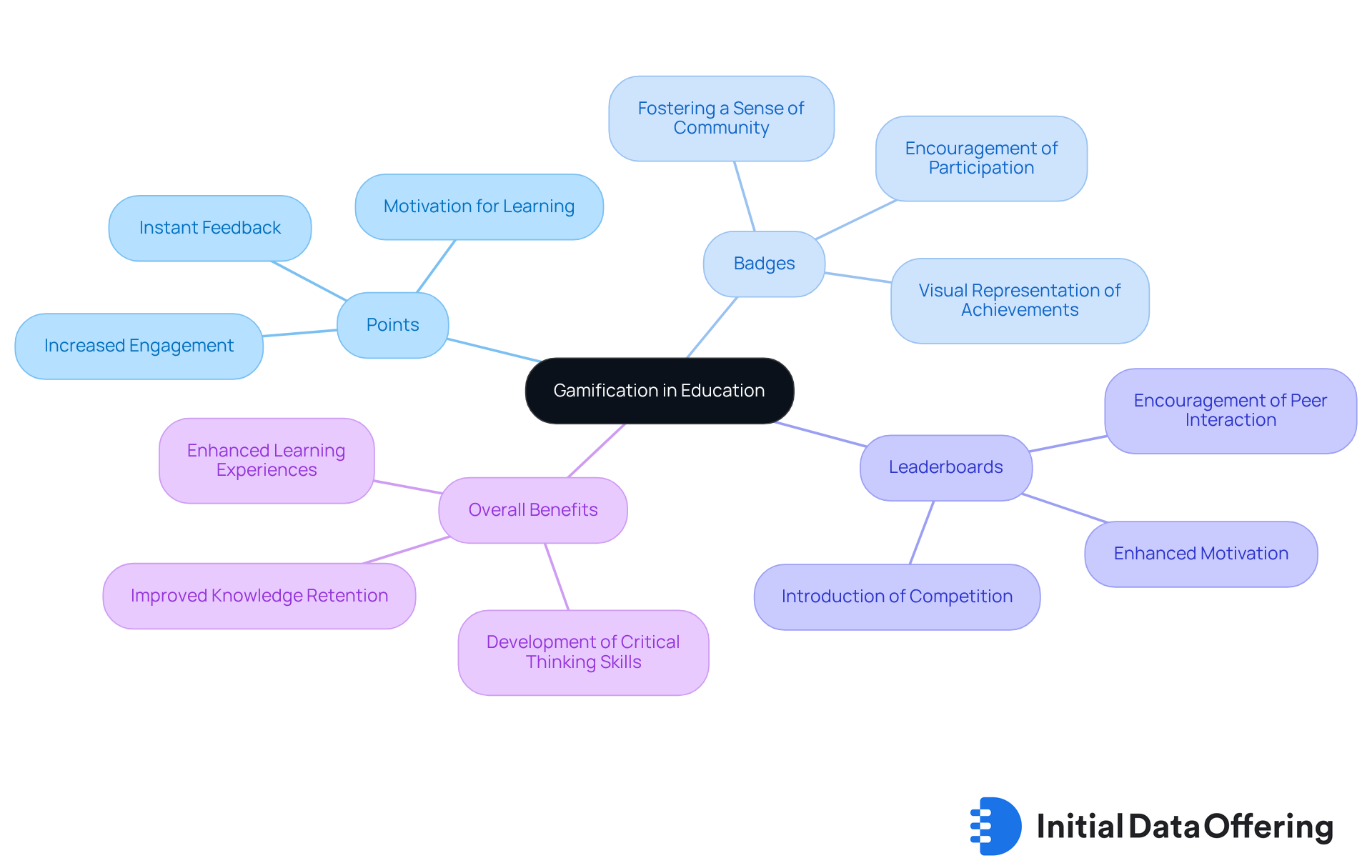
Video Learning: Catering to Diverse Learning Styles
Video learning serves as a transformative tool for addressing diverse learning styles, effectively combining visual and auditory stimuli to boost comprehension and retention. Educational platforms that incorporate video content demonstrate more dynamic engagement of learners than conventional text-based resources within the field of education software development. For instance, instructional videos can simplify complex concepts into manageable segments, facilitating easier understanding of challenging subjects. Research indicates that when students received videos instead of traditional teaching methods, their average grade increased from a B to a B+.
The adaptability of video allows students to revisit material at their own pace, promoting customized educational experiences that cater to individual needs. Almost 80% of instructors believe that access to a dedicated collection of instructional videos would significantly enhance teaching effectiveness. Platforms like Boclips Classroom exemplify this trend, offering over 2.2 million curated, curriculum-aligned videos that support various pedagogical approaches. This adaptability not only boosts engagement but also ensures that learners can tailor their experiences, ultimately resulting in improved outcomes.
However, it is crucial to recognize that challenges such as limited access to high-speed internet can impact the effectiveness of video learning. How can educators and institutions address these barriers to maximize the benefits of video learning? Understanding the potential and limitations of video as a learning tool is essential for effective education software development.
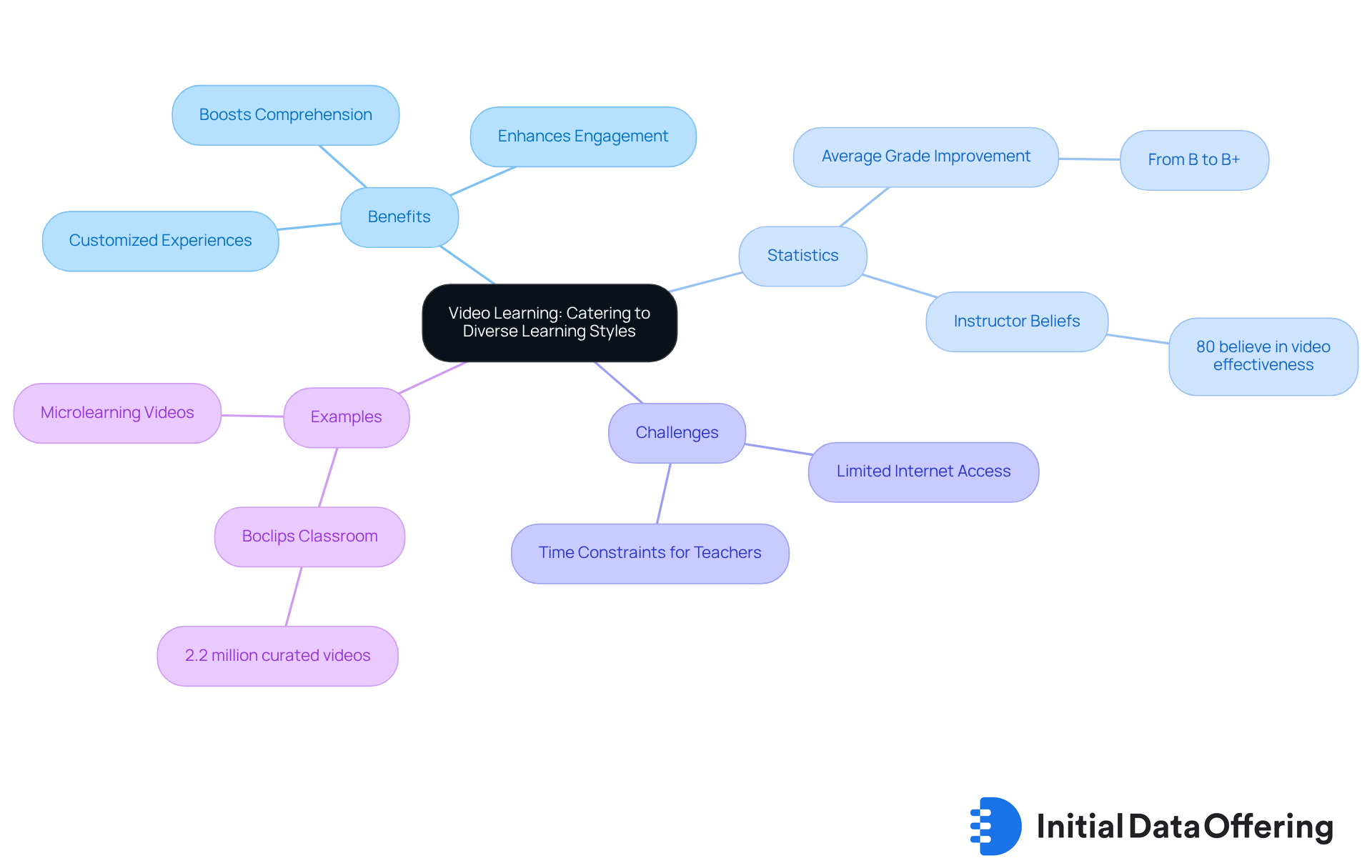
Assessment Tools: Enabling Real-Time Feedback and Analytics
Assessment tools are crucial in educational software, offering real-time feedback and analytics that significantly enhance learner performance. These tools enable educators to continuously monitor progress and adapt their teaching strategies as needed. For example, platforms like Nearpod and Kahoot! integrate instant quizzes and polls, delivering immediate insights into learner comprehension. This allows educators to identify specific areas that require additional focus.
The data-driven approach not only improves instructional effectiveness but also empowers individuals to take charge of their educational journeys by utilizing education software development. By providing timely feedback on their accomplishments, these tools foster a sense of responsibility among learners. Research indicates that 57 percent of educators using AI tools report improved quality in feedback and grading, while 61 percent believe AI enhances their understanding of learner performance. This data underscores the transformative potential of these technologies in the classroom.
Moreover, the implementation of real-time feedback systems cultivates a more interactive learning environment. Learners receive immediate responses that guide their study efforts, ultimately enhancing their overall academic experience. However, it is essential to address concerns surrounding algorithmic bias and the reliability of AI tools in grading. These issues highlight the necessity for careful implementation and oversight to ensure that the benefits of these technologies are fully realized.
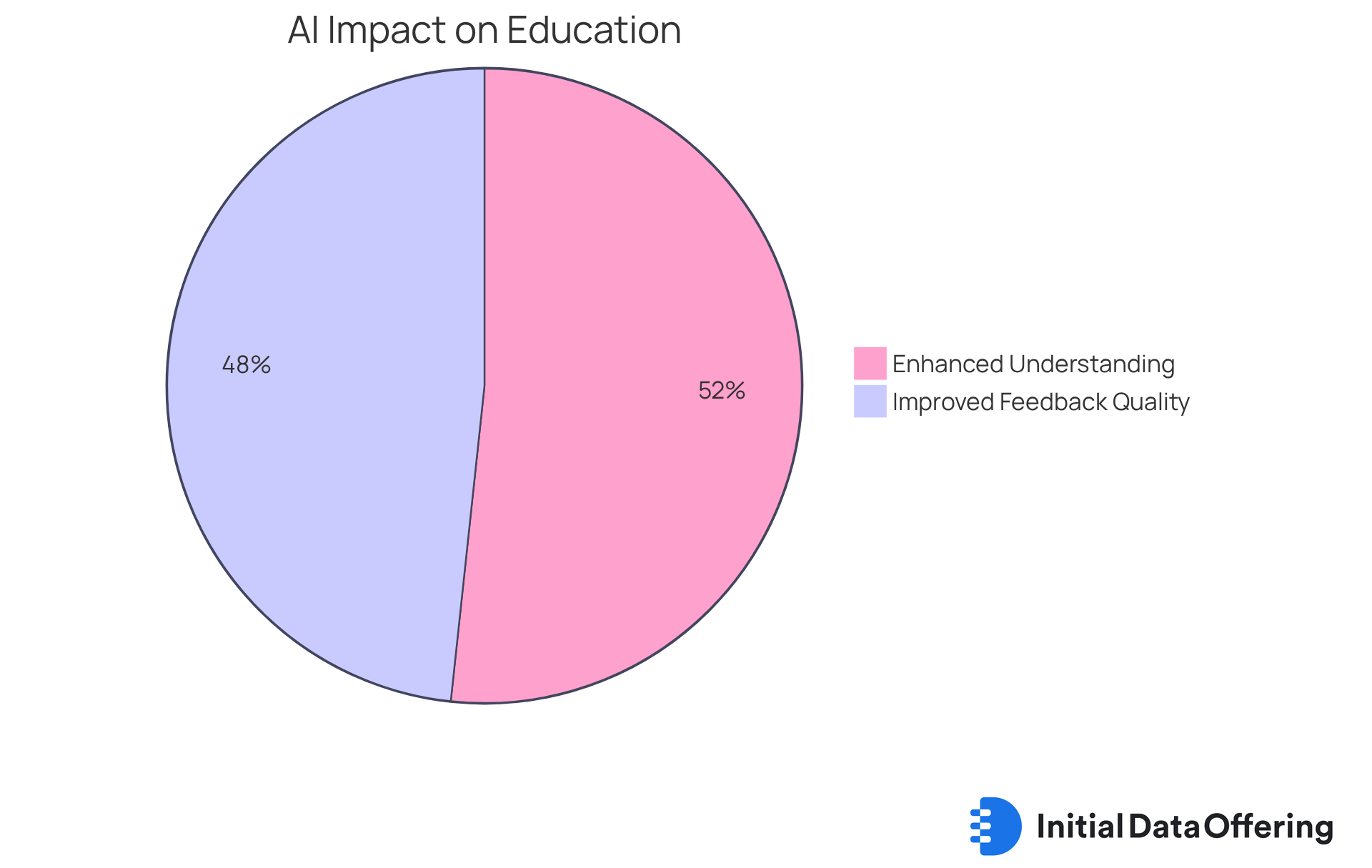
Supplementary Materials: Enhancing Core Curriculum Resources
Supplementary materials are vital for enriching core curriculum resources, as they provide additional context and support that improve student comprehension. These resources feature interactive activities, multimedia content, and real-world applications, all of which enhance understanding and engagement. For instance, instructional software that incorporates additional videos, articles, or practice exercises strengthens essential concepts while catering to diverse study preferences. A significant 48% of districts reported using at least two resources in ELA classrooms. This statistic highlights the prevalence of supplementary materials in educational settings.
By incorporating these materials, educators can cultivate a more comprehensive and engaging educational atmosphere that addresses the diverse needs of learners. This approach not only encourages greater learner involvement but also aligns with the ongoing trend of utilizing education software development to create adaptive learning experiences. As curriculum authority Rick Hess notes, "It’s essential for educators to have a voice in curriculum choices to guarantee it addresses their learners' requirements." The incorporation of such resources is essential for ensuring that core curricula remain relevant and effective in meeting academic standards, while also addressing the potential challenges of misalignment with core instruction.
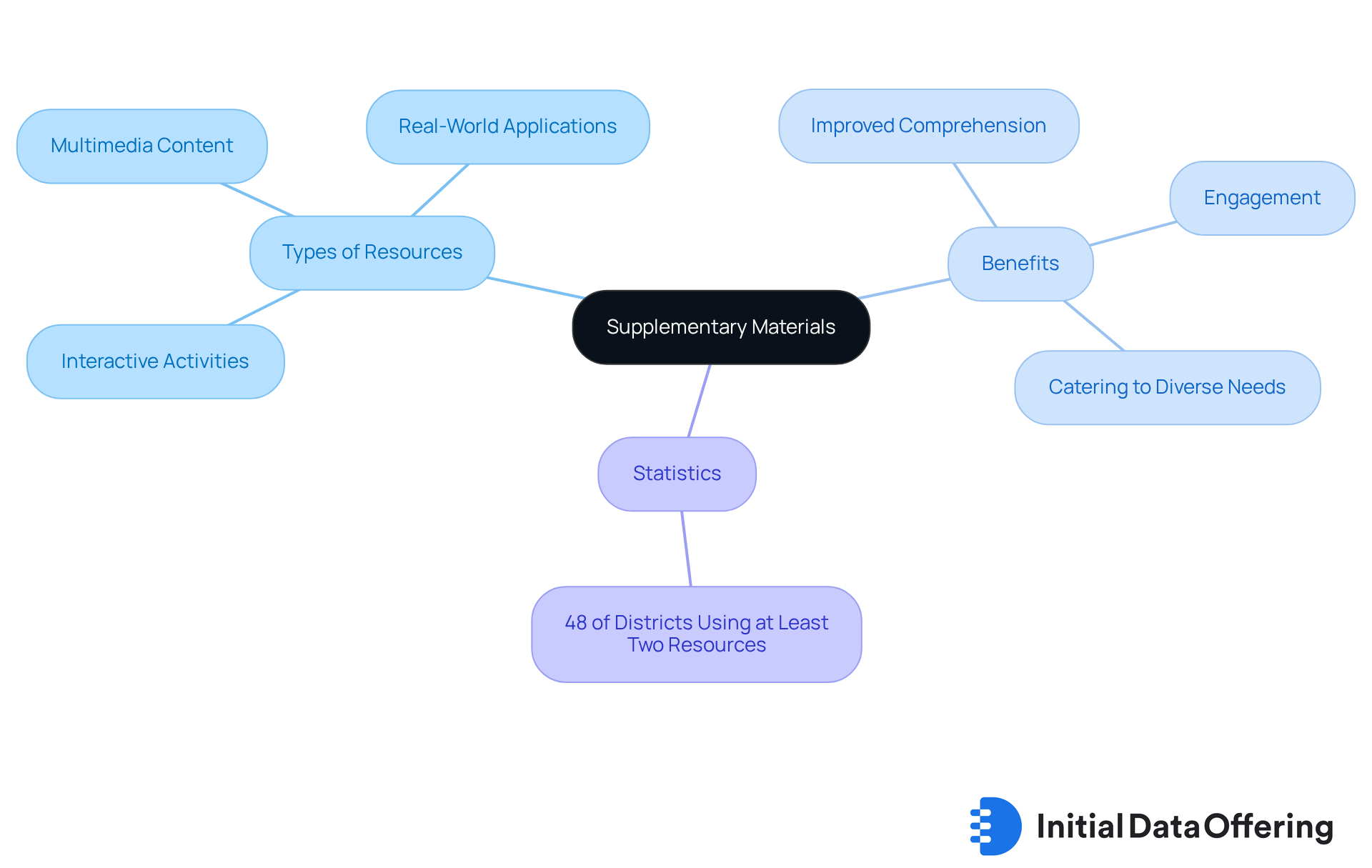
Live Teacher Chat: Providing Immediate Support in Learning
Live instructor chat functionalities in education software development provide learners with prompt assistance, significantly enhancing their educational experience. This feature enables real-time interaction, allowing learners to ask questions and receive guidance without delay. The advantage of such immediate access to education software development support fosters a more responsive and engaging educational environment.
For instance, platforms that incorporate live chat can clarify doubts during lessons, ensuring that learners grasp concepts as they arise. This benefit not only boosts student confidence but also encourages active participation in the learning process, ultimately leading to a more effective and enriching educational journey supported by education software development.
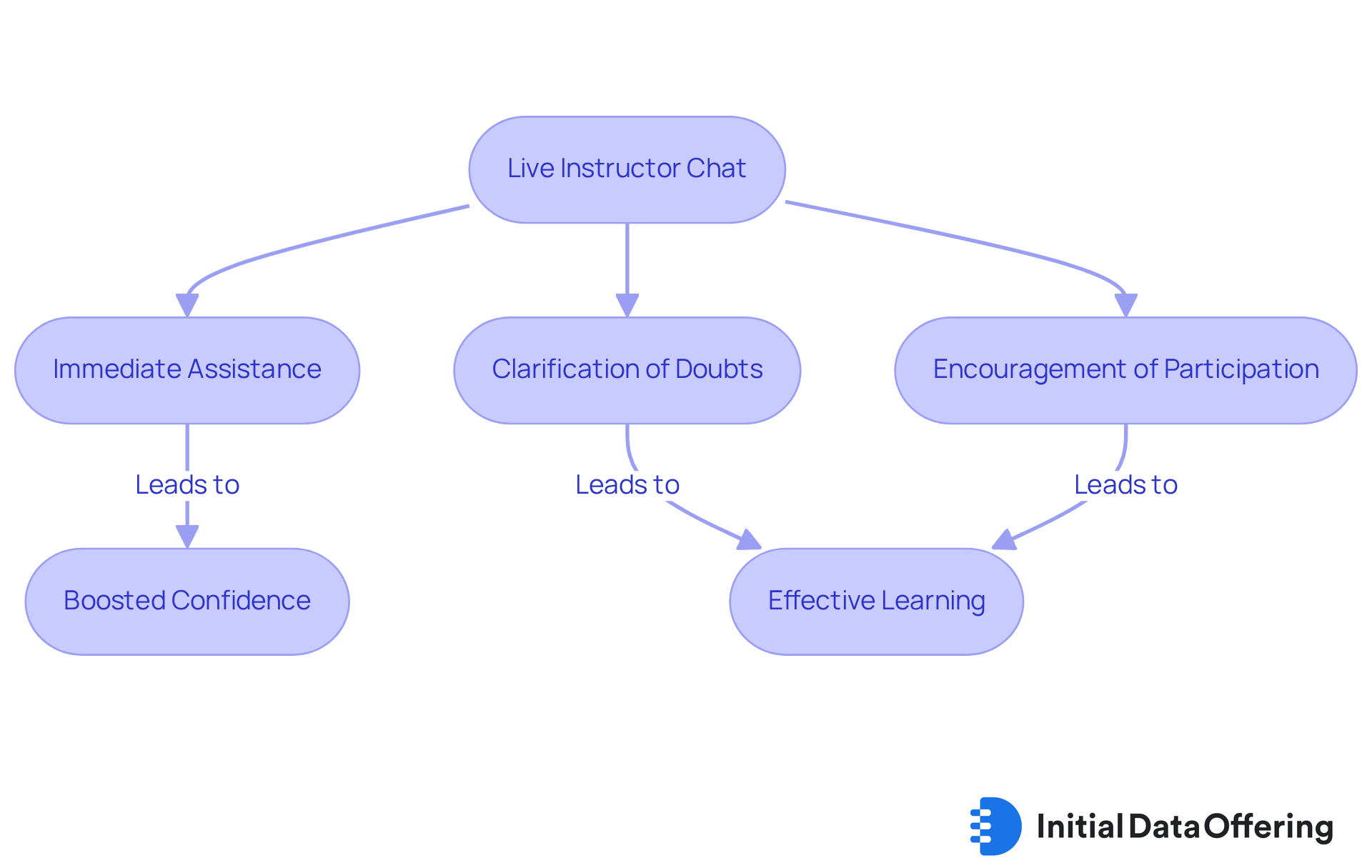
Conclusion
The landscape of education software development is undergoing a remarkable transformation, driven by innovative technologies and emerging trends that cater to the diverse needs of learners. By harnessing tools such as AI, AR, VR, blockchain, and mobile applications, the educational sector is creating more personalized, secure, and engaging learning experiences. These advancements not only enhance educational outcomes but also redefine the way educators and learners interact with content.
Key insights from the article highlight the significance of Initial Data Offering (IDO) in providing high-quality datasets. The integration of AI and ML for personalized learning offers tailored educational experiences, while immersive technologies like AR and VR facilitate deeper engagement. Moreover, secure management of credentials through blockchain technology ensures trust and safety in educational environments. The rise of mobile learning, gamification, video learning, real-time assessment tools, and supplementary materials further illustrates the multifaceted approach to modern education software development. Each of these elements contributes to a more adaptive and engaging educational environment, promoting better learner engagement and achievement.
As the educational technology landscape continues to evolve, it is crucial for educators, developers, and institutions to embrace these trends and innovations. By doing so, they can create more effective teaching strategies, enhance student engagement, and ultimately drive improved learning outcomes. The future of education software development holds immense potential; the commitment to leveraging these advancements will play a pivotal role in shaping the educational experiences of tomorrow.
Frequently Asked Questions
What is the purpose of the Initial Data Offering (IDO)?
The IDO connects educators and developers with high-quality datasets essential for education software development, enhancing the ability of instructional tools to provide tailored experiences for diverse learners.
How does IDO enhance educational software development?
By leveraging AI-driven APIs and the Recursive Data Engine, IDO compiles unique datasets enriched by AI-generated insights, fostering innovation and enabling developers to create data-driven solutions relevant to current educational trends.
What is the impact of customized educational environments on student performance?
Research indicates that customized educational environments can lead to a 30% increase in student scores, highlighting the importance of utilizing quality datasets in application development.
What is the projected growth of the global education technology market?
The global education technology market is projected to reach USD 11,610 million by 2025, while the overall EdTech market is anticipated to be valued at around USD 549.6 billion by 2033.
How does AI and ML integration enhance personalization in education software?
AI and ML tailor educational material to match learners' personal styles and speeds by utilizing learner data, thereby enhancing engagement and fostering a more inclusive educational atmosphere.
What percentage of educational institutions are engaging in education software development or using interpretive AI?
Nearly 50% of educational institutions are actively engaging in education software development or deploying interpretive AI for data-driven insights.
How does predictive AI benefit educators?
Predictive AI enables educators to forecast learner performance, allowing them to identify at-risk individuals and tailor interventions effectively.
What role do AR and VR play in education software development?
AR and VR create immersive learning experiences that allow learners to interact dynamically with content, enhancing knowledge retention and making learning more effective and engaging.
What are the implications of integrating AR and VR in education?
The integration of AR and VR helps create more engaging curricula, allowing learners to grasp complex concepts and apply their knowledge in practical situations through realistic scenarios.